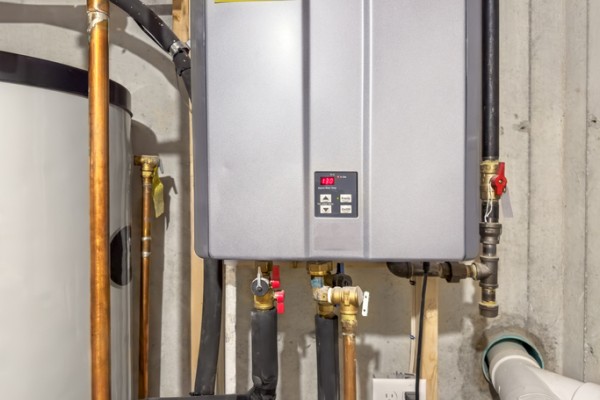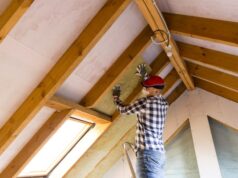
For decades, natural gas has been a popular choice for Australian households, powering hot water systems, heating appliances and kitchen cooktops. However, the energy landscape in Australia is shifting rapidly.
Rising gas prices, changes in government policy and a growing focus on sustainability are all influencing how and where natural gas is used in new homes and renovations.
This article explores the current state of natural gas use in Australia, what’s changing in the renovation and building industry and what homeowners need to consider when planning their projects.
Natural gas use
Natural gas still plays a role in many homes across Australia, especially in areas where mains gas is already connected. It remains a reliable and familiar energy source, particularly for hot water systems and space heating. Many modern gas appliances are efficient and compact, and continuous flow systems provide hot water on demand with minimal energy waste.
Gas is also part of the broader national energy mix, supporting electricity supply during peak periods and acting as a transition fuel as Australia moves towards more renewable energy.
A clear shift toward electrification
In recent years, state and local governments have introduced regulations designed to phase out natural gas in new homes. These changes reflect growing concerns about the environmental impact of fossil fuels, as well as health and cost considerations.
In Victoria, all new homes and residential subdivisions that require a planning permit will need to be fully electric from January 1, 2027. This means no new gas connections for hot water, heating or cooking.
Additionally, from March 2027, any replacement of an existing gas hot water system must be with an electric alternative. Gas repairs will still be allowed until appliances reach end of life, but full system replacements must comply with the new rules.
Sydney has followed a similar path. From January 2026, all new residential developments in the City of Sydney local government area must use electric cooking and heating appliances. While gas hot water systems are still permitted for now, they are expected to be phased out in future revisions of the policy.
These moves are part of broader efforts to cut carbon emissions, improve indoor air quality and reduce household energy costs. While gas remains available in many areas, it is becoming less prominent in planning decisions and energy strategies.
Why the change?
There are several factors driving the shift away from gas:
- Environmental impact: Burning gas produces carbon dioxide and other emissions that contribute to climate change. Electrification, particularly when paired with solar energy, can drastically reduce a home’s carbon footprint.
- Health concerns: Research has linked gas stoves to indoor air pollution, including the release of nitrogen dioxide, which can aggravate respiratory conditions such as asthma.
- Energy costs: Gas prices have increased steadily in recent years, particularly on Australia’s east coast. In many areas, electricity, especially when supplemented by rooftop solar, is now cheaper for households over the long term.
- Policy and compliance: With state-level regulations mandating electric-only homes, builders and renovators must plan ahead to ensure new projects meet compliance standards.
What does this mean for building and renovation?
For anyone building or renovating a home, it is essential to understand local regulations and plan energy systems accordingly. In areas where gas is still available, homeowners may choose to continue using existing appliances until they need replacing. However, installing new gas infrastructure in a new build or extension may not be allowed, depending on local laws.
In regions affected by gas bans, homeowners and builders must adopt all-electric systems. This includes electric heat pumps for hot water, reverse-cycle air conditioning for heating and cooling, and induction cooktops for cooking. These systems not only meet regulatory requirements but are also more energy efficient when powered by rooftop solar panels or grid electricity from renewable sources.
Energy-efficient alternatives to gas
As gas is phased out, several electric alternatives have become widely available and increasingly affordable:
- Heat pump hot water systems are highly efficient and suitable for most Australian climates. They work like a refrigerator in reverse, using heat from the air to warm water and reducing energy use by up to 70% compared to traditional electric storage systems.
- Solar hot water systems use rooftop collectors to heat water and include an electric or gas booster for cloudy days. They can significantly cut energy bills, especially in sunny regions.
- Induction cooktops are now a popular replacement for gas stoves. They offer fast heating, precise control and improved safety, using electromagnetic energy to heat pots and pans directly.
- Reverse-cycle air conditioners provide both heating and cooling, making them a cost-effective replacement for gas space heaters and ducted systems.
Planning for a future without gas
With changes to gas regulations rolling out across the country, now is the time for homeowners, builders and designers to embrace electrification. Here are a few practical steps to future-proof your project:
- Check local laws: Energy regulations vary between states and councils, so it’s important to confirm what applies in your area before planning a new build or renovation.
- Factor in energy efficiency: Homes with good insulation, double-glazing and passive design features require less energy to heat and cool, reducing demand on your appliances.
- Maximise solar use: If possible, install a rooftop solar system and consider a battery to store excess energy. Electric appliances perform best when paired with solar, allowing homeowners to reduce both emissions and energy bills.
- Use qualified trades: Always work with licensed professionals who understand the latest standards and technologies, including those trained in electric hot water systems, energy modelling and solar integration.
- Plan ahead for upgrades: Even if you’re not ready to remove gas entirely, design your home with future conversions in mind
Natural gas is still used in many Australian homes, but its role is changing rapidly. With governments introducing new building codes, energy prices continuing to rise and public sentiment shifting toward sustainable living, electric alternatives are becoming the preferred choice in residential construction.
Whether you’re planning a renovation, designing a new home or simply replacing an old appliance, switching to electric systems can reduce your running costs, lower your carbon footprint and prepare your home for the future.





